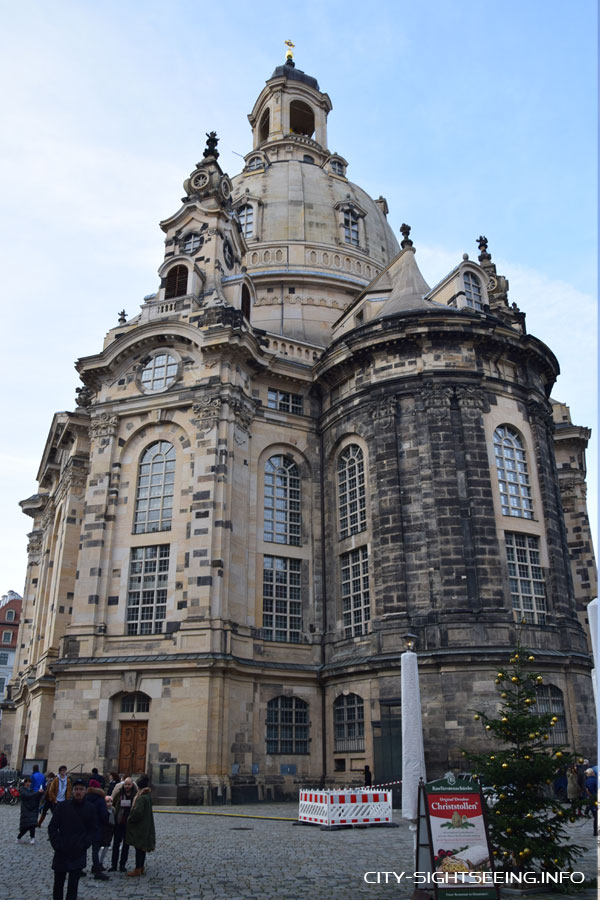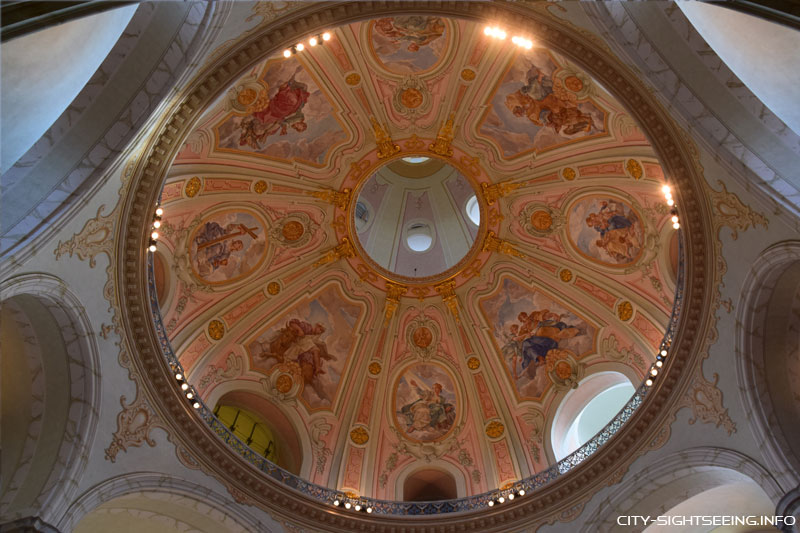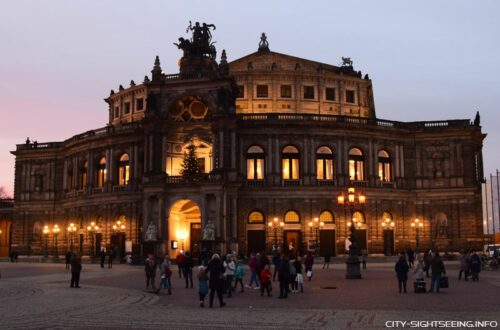Frauenkirche – Church of Our Lady
The Frauenkirche in Dresden is one of the city’s most impressive landmarks and a masterpiece of Baroque architecture. With its monumental sandstone dome, it dominates the cityscape and is one of the largest sandstone buildings in the world. After its destruction during World War II and decades of remaining as a ruin, the church was rebuilt after the reunification and today stands as a symbol of peace and reconciliation. Visitors can tour the church for free and enjoy a breathtaking view over Dresden from the observation platform at a height of 67 meters. The Frauenkirche attracts approximately 1.5 million guests annually.
Table of Contents
Frauenkirche at Dresden Neumarkt
Around 1020, a small wooden mission church likely stood on the site of today’s Frauenkirche. The original name “Our Lady” refers to the veneration of Saint Mary. Over the centuries, the wooden church was replaced by a Romanesque stone church, which underwent multiple renovations. It wasn’t until 1722 that the city council decided to construct a new church, as we know it today. Saxon architect George Bähr was commissioned to design the new Frauenkirche, and from 1726 to 1743 it was built according to his plans. However, Bähr did not live to see the completion of his work, as he passed away in 1738. His successor, Johann Georg Schmid, finished the construction.
Originally, a wooden dome covered in copper was planned, but due to cost concerns, it was replaced by a stone dome made entirely of Saxon sandstone, which is now one of the church’s defining features. The dome, known as the “Stone Bell” due to its lower shape, is one of the largest stone church domes north of the Alps.
The church stands approximately 91 meters tall, with the dome having a diameter of 23.5 meters. With a width of nearly 42 meters and a length of 50 meters, the Frauenkirche is one of the most remarkable examples of German Baroque architecture and offers more than 1,600 seats. Today, it is not only a vital part of Dresden‘s Baroque history but also shapes the city’s world-famous skyline.

Frauenkirche | Reconstruction after Destruction at the End of World War II
At the end of World War II, the Frauenkirche was severely damaged during the devastating air raids on Dresden. The intense heat caused the dome to collapse, and the church was completely burned out. During the GDR era, the ruins stood as a war memorial. It wasn’t until after the reunification, nearly 50 years later, that the clearing of the debris began in 1993, followed by the painstaking reconstruction of the Frauenkirche in 1994. The church was finally reopened in 2005 and today stands as a symbol of peace and reconciliation.
The Dresden Frauenkirche is now not only a place of worship but also a major tourist attraction. Around 1.5 million people visit the church each year. From the viewing platform, located 67 meters high, visitors can enjoy a breathtaking view over Dresden and its surroundings.

Visiting the Dome
Visitors can ascend to the 67-meter-high viewing platform and enjoy a unique view over Dresden and the surrounding area.
Visitor Numbers per Year
The landmark attracts around 1.5 million visitors each year.
Address
Neumarkt, 01067 Dresden
Opening Hours
The Frauenkirche is open to visitors from Monday to Friday between 9:00 AM and 6:00 PM, and on Saturdays from 9:00 AM to 3:00 PM. Entry to the church is free, while access to the dome costs between 5 and 8 euros.
Tickets & Tours
The Frauenkirche is not only one of Dresden’s most important sights but also one of Germany‘s most significant historical buildings. Its reconstruction stands as a beacon of hope and renewal, resonating far beyond the city limits.
Weiteres / More:




